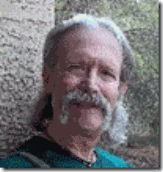May Theme: (Mis)representation
Character development in the world of microfiction

This month, we’re going to look at character development. In microfiction, we have so few words available to us that it’s natural and necessary to lean on archetypes, but sometimes we slip and land on stereotypes. Sometimes our fiction shows only one side.
In (mis)representation, this month’s theme, we’re going to look at developing rich characters while challenging stereotypes at the same time.
We’ll tell our own stories, using the characters each prompt gives us, but at the same time, we’ll think about representing them for the better.
Even if all we can show is the tip of the iceberg.
We’ll use our characters to shatter myths that certain roles of society belong to only one gender, or only some people can hold positions of power and while others must hold the monopoly on poverty.
Representing all groups as capable agents of their own destiny is important because it affects the narrative that young people internalize.
Zane’s daughter, for instance, has got it into her head that doctors are men and women are nurses, despite parenting that girls (and boys) can do either.
But the image and idea of the male doctor and the female nurse persist in fiction and storybooks, and parents must go out of their way to find stories of girl astronauts and boy dancers.
This month, we’ll create rich, vibrant characters that challenge stereotypes and show all types of people as heroes and heroines — capable of reshaping the world.
Ultra-short stories should work the same as regular fiction:
- A complete story, with a beginning, middle, and end, even if the beginning takes you immediately into the action.
- They should feature well-developed characters, although you rarely have space for more than one or two.
- There is often some overarching theme, which we try to do with the weekly prompts here on Microcosm. Speaking to the universal in very specific stories.
So, what do we mean by character development?
There are typically two aspects to it.
Firstly, there are the attributes of the character. These might include:
- what they look like
- any defects they might have (e.g., physical, character traits)
- their history
- what relationships do they have with others (e.g., humans, pets)
- their goals and dreams
- how they talk to others
- their internal dialogue (i.e., how they talk to themselves and about what)
- what is it that helps us to relate to them
And secondly, there are the challenges they must face and overcome during the course of the story. These typically drive personal growth and are often at least as important as the more tangible achievements the hero may make.
Our theme, then, will focus on creating vivid pictures of various characters, but still within the context of a short story. We still want to see some action or forward movement, but the primary focus should be on the person (or people, but sticking to a single character might be less challenging).
If you need a bit of assistance in approaching this challenge, this article may be of use.
Each week, we will provide a selection of characters, and you can choose one of those to represent in your story.






